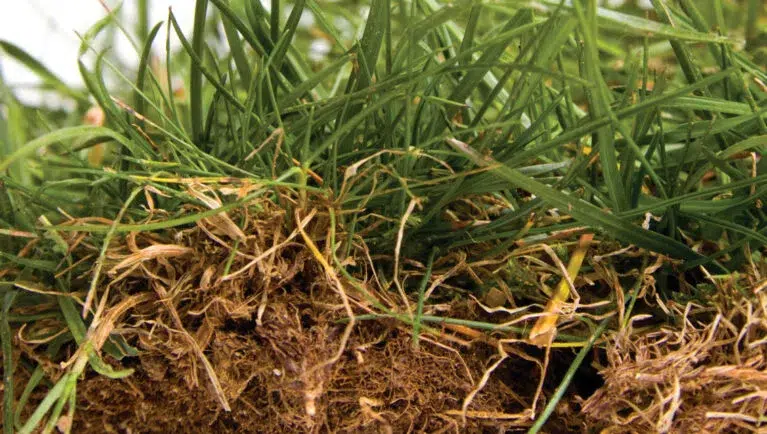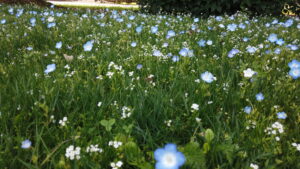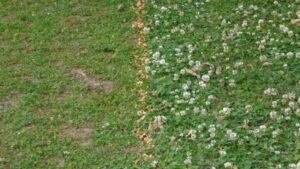Let’s be honest: forage, cover crops and turfgrasses haven’t always been in the spotlight when it comes to seed innovations and intellectual property protection. However, if you dig in deeper, you may be surprised by what you root for!
When you look at the USDA Plant Variety Protection (PVP) and USPTO patent history, you begin to see where seed companies, universities and foundation seed companies are investing for the future.
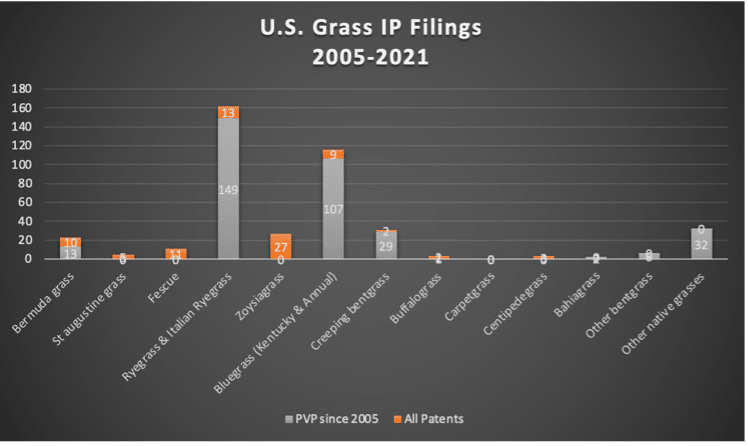
Ryegrass is both an annual and a perennial that garners the most interest due to the adaptability of rye varieties both for forage production and grazing needs across the U.S.
Bluegrass is found in many golf courses across the U.S. and northern homeowner lawns… it’s also a weed in my TifTuf® bermudagrass lawn!

Bermudagrass has a wide following as both a common bermudagrass variety and as a hybrid bred for specific applications. Triploid bermudagrass hybrids are sterile and fit the demanding requirements of athletic fields, golf courses, and homeowner lawns.
One of the interesting twists about bermudagrass is, depending on the state and cultivars, those destined for athletic fields, golf courses and homeowner lawns maybe certified to ensure a high quality, weed free sod.
In my state of North Carolina, for example, the NC State 2023 Sod Producers report indicates that approximately 50% of all bermudagrass sod sold is certified. Fertile, hybrid bermudagrass is also one of many types of cultivars used for forage production, both pasture and hay, across the U.S.
Seed certification by state crop improvement associations uses a quality control process that ensures commercially sold seed/sod is largely free from weed seed, disease, and other cultivar contaminations. If you drive by a developing neighborhood, even just a couple of years after houses were built and sod was installed, and you’ll notice the weedy lawns that didn’t use certified seed/sod. Certified seed/sod is identified by a blue tag that displays why certified seed/sod is of higher quality than non-certified seed/sod (source: Univ of Nebraska, Husker Genetics). Certification is used in many crops that require a higher quality seed or turf cultivar.
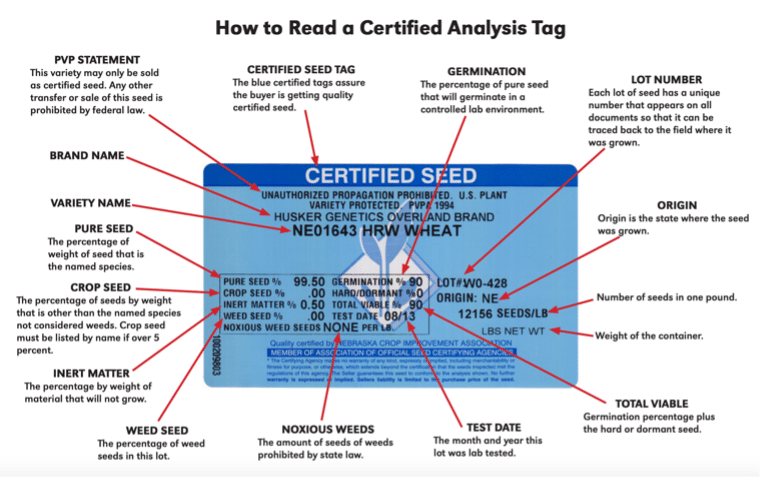
Cover crops are cultivars that are planted to cover soil in order improve soil structure by reducing erosion, reducing moisture loss, suppressing weeds and pests, increasing microbiome and biodiversity in many cropping situations. These cover crops can be planted across fields in crop rotation with field crops, in between rows of field/tree crops, or row crops can be directly planted into a senescing cover crop.
Many cultivars can be considered a cover crop from fescue, ryegrass, clover, vetch, medic, barley, rape, cowpea, millet or Sudangrass and, surprisingly enough, many have some type of IP protection like USDA PVP. In today’s environment of being asked to ‘do more with less’, cover crops are making a comeback to provide a more sustainable practice within many cropping systems. In fact, in 2022, the American Seed Trade Association added a Sustainability pillar to their strategic plan of which cover crops is a major contributor. Check out their Cover Crop flier here.
There you have it! As you prepare for the fall season of FOOTBALL (U.S.) or FUTBOL (rest of world), you can begin to appreciate the manicured turf these athletes compete on! That turf’s cousin may be a forage for our bovine companions contributing delicious steaks and hamburgers!
And where does beer fit in you may ask? Barley is a cereal grain but can be used as a cover crop. It also can also be certified. But close to our hearts, it is the cereal grain most important to companies involved in malting… brewing beer!


